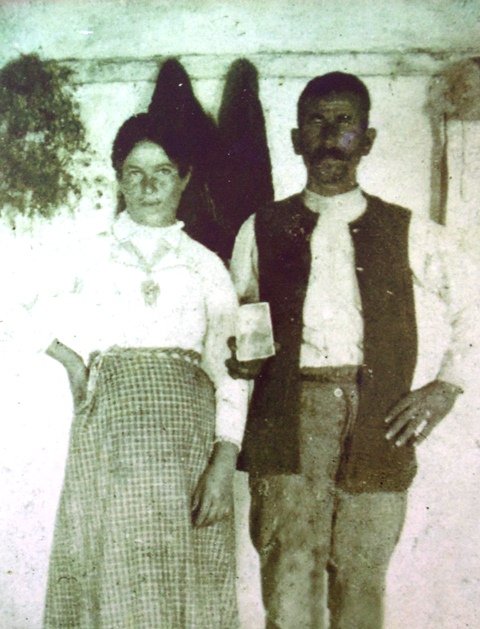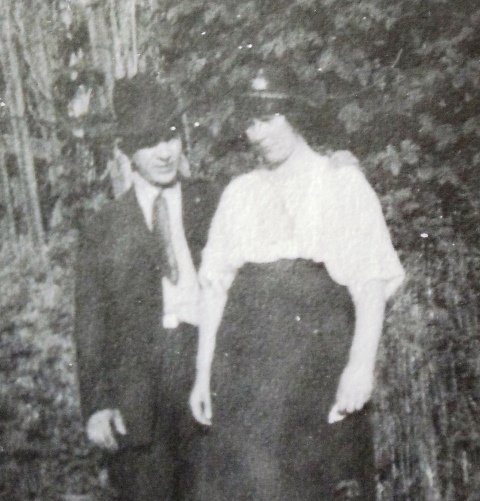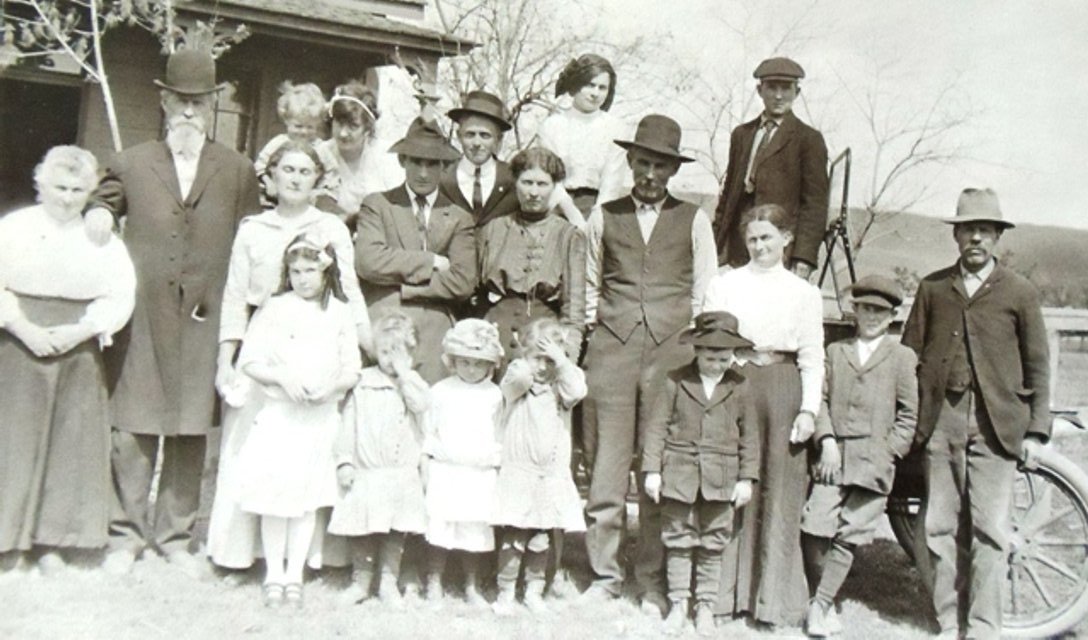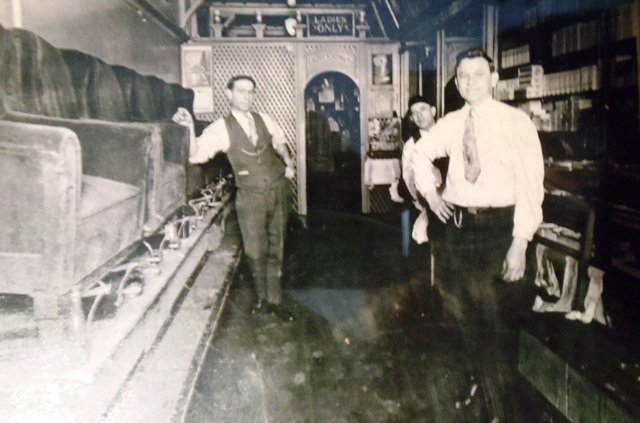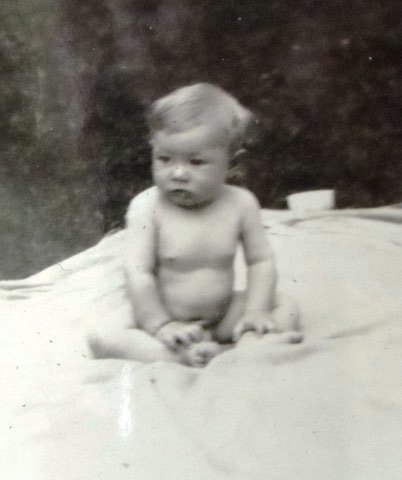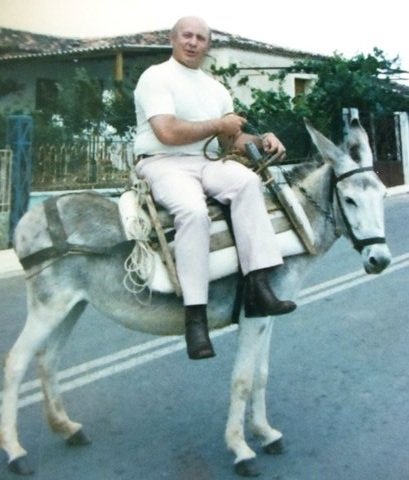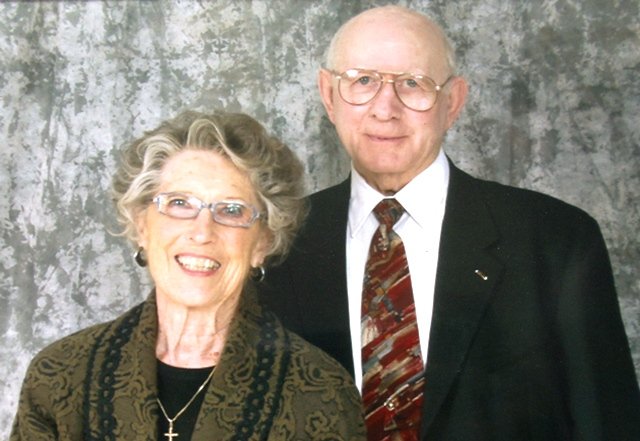Family Comes First
The walls of Tom Cassis’ basement recreation room contain a family history of plhotos beyond imagination. For him as long as the family comes first, everything else will fall in line. His memory of names, dates and places shows how important those relationships have been in his life.
Thomas (Tom) Vance Cassis was born in Spokane, Washington, to William (Vasilios) G. Cassis and Anna Katherine Cassis (nee Logsdon). Tom’s father was born in Brallos, Greece, on January 15, 1894, to George Kassios and Athanasia Mouses. William Anglicized the name to Cassis for easier pronunciation, regardless of its resemblance to the French liqueur. William came to the United States in 1912 through Ellis Island to work on the railroad. Despite his fear of heights, he worked on a bridge crew carving the route through the north Cascade Mountains of Washington State. He then worked in a Bellingham, Washington, sawmill and for a while illegally crossed the border and shined shoes in Vancouver, British Columbia, a trade he had learned in Lamia, Greece. Back in Washington, William washed pots and pans in Seattle restaurants, and then moved to Spokane where he shined shoes with Andy Mitros and Sam Pappas. That‘s where Anna Catherine Logsdon came to have her high-top boots cleaned. Anna was a farm girl from Davenport, Washington, born November 11, 1892. William and Anna were married on January 6, 1921.
Their first child, John, was born in 1922, but died from spinal meningitis while an infant. Georgia was the next child, born in 1924, and Robert followed in 1928. In 1980, Robert was the unintended victim of a shooting and died in a Pierce County cocktail lounge. Thomas Vance Cassis was born on February 3, 1930. The youngest child, Norma Jean was born in 1936. Tom contracted whooping cough at three days of age and was a sickly child until the age of 11 or 12. He regained his health and went on to run track and play football. At Rogers High School in Spokane he was captain of the football team in 1947 and president of his 1948 graduating class. Tom’s mother grew up cooking for harvest crews in Davenport, thus an excellent cook. She was a “stay at home mom.” Anna also took part in Greek community activities, having served as the first president of the Spokane chapter of the Daughters of Penelope, the womens auxiliary of AHEPA (American Hellenic Educational Progressive Association). Tom’s nouno (godfather) John Liascos lived behind them and was William’s partner in the Union Tavern. When John died, William purchased his share of the tavern which held the oldest continuously-operated beer license until it was sold in 1957. William usually left for work before Tom awoke and returned home after the children were asleep. Thus, almost no Greek was spoken at home. However, weekends were spent with Greek families: the Kallas family, Chris Manos and Jim Somas who had truck farms in the Spokane Valley. New Year’s Day, (St. Basil’s Day in the Greek Orthodox faith) would find a number of visitors at the Cassis home on West Grace Avenue near Holy Trinity Greek Orthodox Church.
When U. S. Marine Corps recruiters came to his high school, Tom and his good Italian friend Bill Barton (Bartoni) fell in love with the dress blue uniforms. As Tom was only 17 he needed his parent’s permission to join the reserves. When the recruiter (a friend of the family) came to the house, Tom’s father was reluctant to give his approval. Tom assured his father that, since World War II had ended, there was no possibility of seeing active duty. When William finally gave permission, he said, “Tom, there’s going to be a day when you will regret that I did this.”
As a reservist Tom spent two weeks in the summers of 1948, 1949 and 1950 being paid to train at Camp Pendleton, California. While with a friend in the Los Angeles bus station, they heard from a boy selling newspapers that U.S. war planes had been in “dog fights” over Korea and knew that activation would soon follow. Tom had finished pre-law classes at Gonzaga University in Spokane and was working for Western Fruit Express rebuilding railroad refrigeration cars when he received orders to report for active duty. In August of 1950 he was sent back to Camp Pendleton initially as a clerk typist. Subsequently, he found himself carrying a 1919 A4 machine gun in San Diego Harbor waiting to be shipped to Korea. On board the USS Thomas Jefferson, he learned to field strip and re-assemble the weapon and was assigned to be an ammunition carrier. Shortly after landing in Japan he transferred to a troop transport headed for Inchon, Korea.
In Korea maneuvers began with lengthy practice hikes and a 20-mile hike to build a road block to keep North Koreans out. In the capital city of Seoul, South Korea, between a former Japanese-run prison and several homes across the street, his unit encountered heavy enemy fire. Tom’s father’s words must have echoed in his head when the knob of his cartridge belt was shot off and the belt fell to the ground. He sprinted up the street to deliver ammunition wondering why he was not injured as bullets were hitting the homes next to him. He found some protection by a burned-out truck but was hit in the leg by a ricocheting bullet which broke the flesh. However, he was still able to walk fairly well. The next incident occurred on November 2, 1950 when his unit encountered a large Chinese enemy group. They helped provide machine gun fire over the heads of advancing Marines along with artillery barrage and napalm from planes overhead to help secure a crucial hill. During that encounter he was injured by a nearby mortar explosion and spent three weeks in a hospital with a concussion. He was released the day before Thanksgiving, and enroute to his next assignment, was able to secure a large bottle of sake and some apples for his Thanksgiving dinner.
Tom was next involved in what was the most difficult battle for Marines since Iwo Jima in World War II. This was a decisive battle at the Chosin Reservoir in late November and early December of 1950. Many American servicemen remain buried in mass graves there. Temperatures were well below zero and the Americans encountered even larger masses of Chinese troops. When ordered off the hill, Tom was running and was hit in the left arm while trying to “break the 400 meter world record.” Luckily the bullet lodged between his skin and underwear causing only a large bruise. After reassembling, a group of 20 men re-took the hill with 16 Marines returning after the battle. During that time Tom survived for 12 days on Tootsie Rolls and nine days without sleep. On December 10, 1950 First Marine Division entered the seaport city of Huhgnam, North Korea. Survivors of the Chosin campaign boarded ships and sailed to Pusan, South Korea, and then onto Masan, South Korea. A division tent camp was started and within a few days replacements started arriving to rebuild the First Marine Division. Tom remained in this unit until May 10, 1951 when he rotated to the U.S. After a 30-day leave at home he reported for duty at Pier 91 in Seattle where he served until his release from active duty in February, 1952. The events of his days in Korea are so firmly cemented in Tom’s memory that he can recall every minute of his experience. In his mind’s eye he can still see every telephone pole on the street in Seoul where he first encountered enemy fire.
One bright spot in an otherwise dismal period was when Tom learned that a relative was serving in the Greek Army nearby. Tom could see a bonfire and Greeks dancing around the fire on Easter, 1951. He was disappointed, but not surprised, when a superior refused his request to join the festivities.
Only a few of Tom’s experiences in Korea are included here. The complete story is being documented by Carol Hipperson who has met with Tom on a number of occasions and hopes to publish a book about his time in Korea.
Tom met Jacqueline “Jackie” DeMers in 1947 through mutual friends. Jackie was born in Polson, Montana, to Hoyt DeMers and Ione Wilkinson on August 18, 1930. The family moved from Polson to Spokane, Washington, in 1941 and Jackie graduated from North Central High School in 1948. She was hired that year as a secretary to the purchasing agent at the Kaiser Aluminum plant in Trentwood, Washington. Jackie’s family was among the early settlers in western Montana having migrated from the area of Montreal, Canada. Tom and Jackie were married in Spokane on April 6, 1952 at Knox Presbyterian Church with Tom’s brother-in-law Robert as best man and sister Georgia as matron of honor. The marriage was later confirmed at Holy Trinity Church in Spokane. Tom began law school at Gonzaga University in September of 1952. After graduation and passing the bar examination in 1956, he opened his practice which lasted until his retirement in 1992. His has been a general solo practice focusing on probate, domestic issues, personal injury and real estate. It provided him with a good living and an interesting clientele. Tom and Jackie have two children: their daughter Denise, born May 26, 1953, and son Tom, born July 19, 1958. There are four grandchildren and three great grandchildren.
When Tom was growing up, the Greeks of Spokane used a community hall, where he was baptized in 1930, before the church was built in 1947. In addition to his Greek Orthodox upbringing he values the association with the nuns in Spokane’s Catholic schools which he attended. On some Sundays he attended the Methodist Church, his mother’s family’s denomination. Tom has served on the board of Holy Trinity Greek Orthodox Church, holding the office of president for two terms, and has chaired the annual Greek dinner festival. Jackie has a beautiful voice and has sung in Holy Trinity’s choir for 55 years.
Tom’s father William passionately believed that America was the greatest country in the world, especially when compared to the hard times in his Greek village. Tom shares those feelings and has seen the successes of other Greek families in Spokane who combined their passion with hard work. Tom also shares the love of Greek food and is proud when his grandchildren look forward to their papou’s (grandfather) lamb, pot-roast, chicken and spaghetti. Although he is less active in the Greek community than he used to be, he has always enjoyed the music and dance along with the food.
Tom remembers the days when the Spokane Greeks were like family and elders were known as theo (uncle) or thea (aunt) and one’s actions had repercussions throughout the entire community. While Tom is not much for clichés, he does believe that love of one’s family and heritage are the most important components of life. “If your family comes first, everything else falls in line.”
By John and Joann Nicon, July 2012
PHOTOS
Tom and his wall of photos, 2012
Paternal grandparents, George Kassios and Athanasia Mouses, circa 1900
Shoe shine parlor (l-r) Sam Pappas, William Cassis, Andy Mitros, circa 1920
Family photo at home of Tom’s great grandparents James Riley and Katherine Ann Hopkins in Sprague, Washington. Tom’s grandparents Abraham and Sarah Hopkins at far left and Tom’s mother Anna in middle of second row, circa 1905
William and Anna Cassis, 1921
Tom as a baby, 1930
Union Tavern, Spokane, Washington, (l-r behind bar) William Cassis Jim Liberas, unknown tavern patrons, circa 1930
William Cassis family (l-r) Bob, William, Norma Jean, Georgia, Anna, Tom, circa 1936
Tom in the Marine Corps, circa 1952
Tom and Jacqueline wedding, April 6, 1952
Tom Cassis family (l-r) Tom, Denise, Tom Jr., Jackie, circa 1962
Tom on a donkey at cousin Maria’s home in Brallos, Greece, 1974
Tom and Jackie, 2012
Photo 1 by John Nicon, all others from Cassis family collection
SOURCES
Video interview by John and Joann Nicon, June 2012; The Cassis & Logsdon Families, video presentation by Tom Cassis
VIDEO SEGMENTS
Tom Joins the Marine Corps
Greeks Celebrate in Korea
William’s Philosophy Passes to His Son


